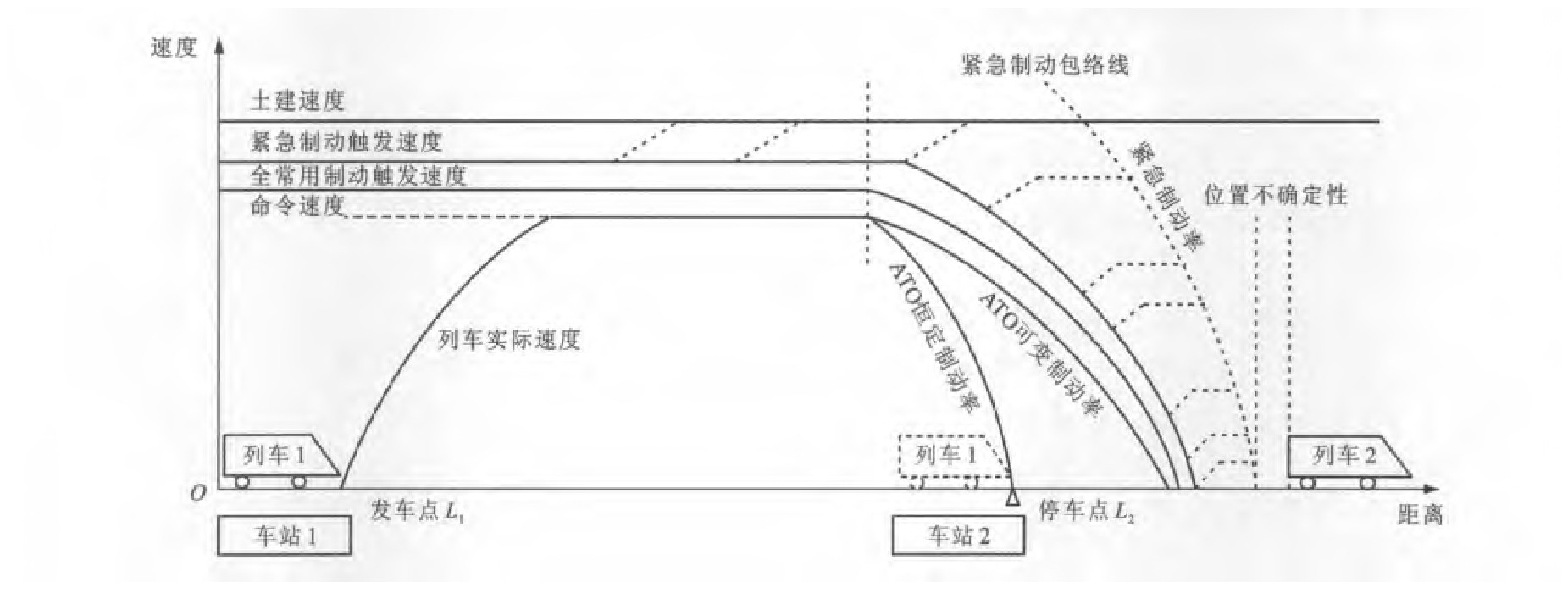Optimization algorithm of train operation energy consumption based on genetic algorithm
Article Text (Baidu Translation)
-
摘要: 研究了CBTC系统中列车控制模型和列车运行调整, 以降低能耗为目标, 对列车在区间的运行控制进行优化组合, 提出了基于遗传算法的能耗优化算法, 根据具体的线路条件, 计算了在不同的运行等级下或不同区间运行时分对应的列车运行速度曲线。以一段2 400m长, 具有典型节能坡设置, 且包含一段60km·h-1区间限速的线路为例, 进行了能耗计算和优化仿真。研究结果表明: 优化之后速度曲线与其对应的运行等级2、3、4的速度曲线相比, 列车牵引能耗减少到原来的62%、58%、60%, 节能效果显著, 算法有效。Abstract: Train control model and train operation regulation in communication based train control(CBTC) system were studied, train operation control in inter-station section was optimized combinatorially for the purpose of reducing energy consumption, and the optimization algorithm of train operation energy consumption based on genetic algorithm was provided.Train operation speed curves were calculated for each performance level or specified run time of each section under particular line conditions.Energy consumption calculation and optimization simulation were performed on a 2 400-meter long track line with the setting of a typical energy saving grade and a 60 km·h-1 speed restriction area.Analysis result shows that the traction energy consumptions of optimized speed curve reduce to 62%, 58%, 60% of speed curves for performance levels 2, 3, 4 respectively, energy saving effect is remarkable, and the optimization algorithm is efficient.
-
表 1 仿真线路数据
Table 1. Simulation track data

-
[1] 荀径, 宁滨, 郜春海. 列车追踪运行仿真系统的研究与实现[J]. 北京交通大学学报, 2007, 31(2): 34-37. https://www.cnki.com.cn/Article/CJFDTOTAL-BFJT200702008.htmXUN Jing, NING Bin, GAO Chun-hai. Study and realization of train tracking simulation system[J]. Journal of Beijing Jiaotong University, 2007, 31(2): 34-37. (in Chinese). https://www.cnki.com.cn/Article/CJFDTOTAL-BFJT200702008.htm [2] CHEN Rong-wu, GUO Jin. Development of the new CBTC system simulation and performance analysis[C]//NING Bin. Proceedings of 12 th International Conference on Computer System Design and Operation in Railways and Other Transit Systems. Beijing: WIT Press, 2010: 497-507. [3] 薛艳冰, 马大炜, 王烈. 列车牵引能耗计算方法[J]. 中国铁道科学, 2007, 28(3): 84-87. https://www.cnki.com.cn/Article/CJFDTOTAL-ZGTK200703016.htmXUE Yan-bing, MA Da-wei, WANG Lie. Calculation method of energy consumption in train traction[J]. China Railway Sci-ence, 2007, 28(3): 84-87. (in Chinese). https://www.cnki.com.cn/Article/CJFDTOTAL-ZGTK200703016.htm [4] KE B R, CHEN N. Signalling blocklayout and strategy of train operation for saving energy in mass rapid transit systems[J]. IEE Proceedings-Electric Power Applications, 2005, 152(2): 129-140. doi: 10.1049/ip-epa:20045188 [5] RUELLAND F, AL-HADDAD K. Reducing subway's energy[C]//IEEE. Proceedings of 2007 IEEE Canada Electrical Power Conference. Montreal: IEEE, 2007: 261-267. [6] 余进. 多目标列车运行过程优化及控制策略研究[D]. 成都: 西南交通大学, 2009.YU Jin. Study on multiobjective optimization of train operation process and its control strategies[D]. Chengdu: Southwest Jiaotong University, 2009. (in Chinese). [7] 石红国. 列车运行过程仿真及优化研究[D]. 成都: 西南交通大学, 2006.SHI Hong-guo. Study on train operation and movement process simulation and its optimization[D]. Chengdu: Southwest Jiaotong University, 2006. (in Chinese). [8] 路飞. 移动闭塞条件下地铁列车的运行优化[D]. 济南: 山东大学, 2006.LU Fei. Operation optimization of the subway train under moving block system[D]. Jinan: Shandong University, 2006. (in Chinese). [9] 余进, 何正友, 钱清泉. 基于微粒群算法的多目标列车运行过程优化[J]. 西南交通大学学报, 2010, 45(1): 70-75. https://www.cnki.com.cn/Article/CJFDTOTAL-XNJT201001013.htmYU Jin, HE Zheng-you, QIAN Qing-quan. Multi-objective train operation optimization based on particle swarm algorithm[J]. Journal of Southwest Jiaotong University, 2010, 45(1): 70-75. (in Chinese). https://www.cnki.com.cn/Article/CJFDTOTAL-XNJT201001013.htm [10] 李玉生, 侯忠生. 基于遗传算法的列车节能控制研究[J]. 系统仿真学报, 2007, 19(2): 384-387. doi: 10.3969/j.issn.1004-731X.2007.02.039LI Yu-sheng, HOU Zhong-sheng. Study on energy-saving control for train based on genetic algorithm[J]. Journal of System Simulation, 2007, 19(2): 384-387. (in Chinese). doi: 10.3969/j.issn.1004-731X.2007.02.039 [11] 李波. 基于遗传算法的列车节能操纵曲线寻优[D]. 成都: 西南交通大学, 2007.LI Bo. Study on energy-saving control curve optimization for train based on genetic algorithm[D]. Chengdu: Southwest Jiaotong University, 2007. (in Chinese). [12] 陈荣武, 诸昌钤, 刘莉. 基于CBTC的城市轨道交通列车能耗算法及仿真[J]. 计算机应用研究, 2011, 28(6): 2126-2129. https://www.cnki.com.cn/Article/CJFDTOTAL-JSYJ201106036.htmCHEN Rong-wu, ZHU Chang-qian, LIU Li. CBTC based urban rail transit train energy consumption algorithm and simulation[J]. Application Research of Computers, 2011, 28(6): 2126-2129. (in Chinese). https://www.cnki.com.cn/Article/CJFDTOTAL-JSYJ201106036.htm -





 下载:
下载:
















